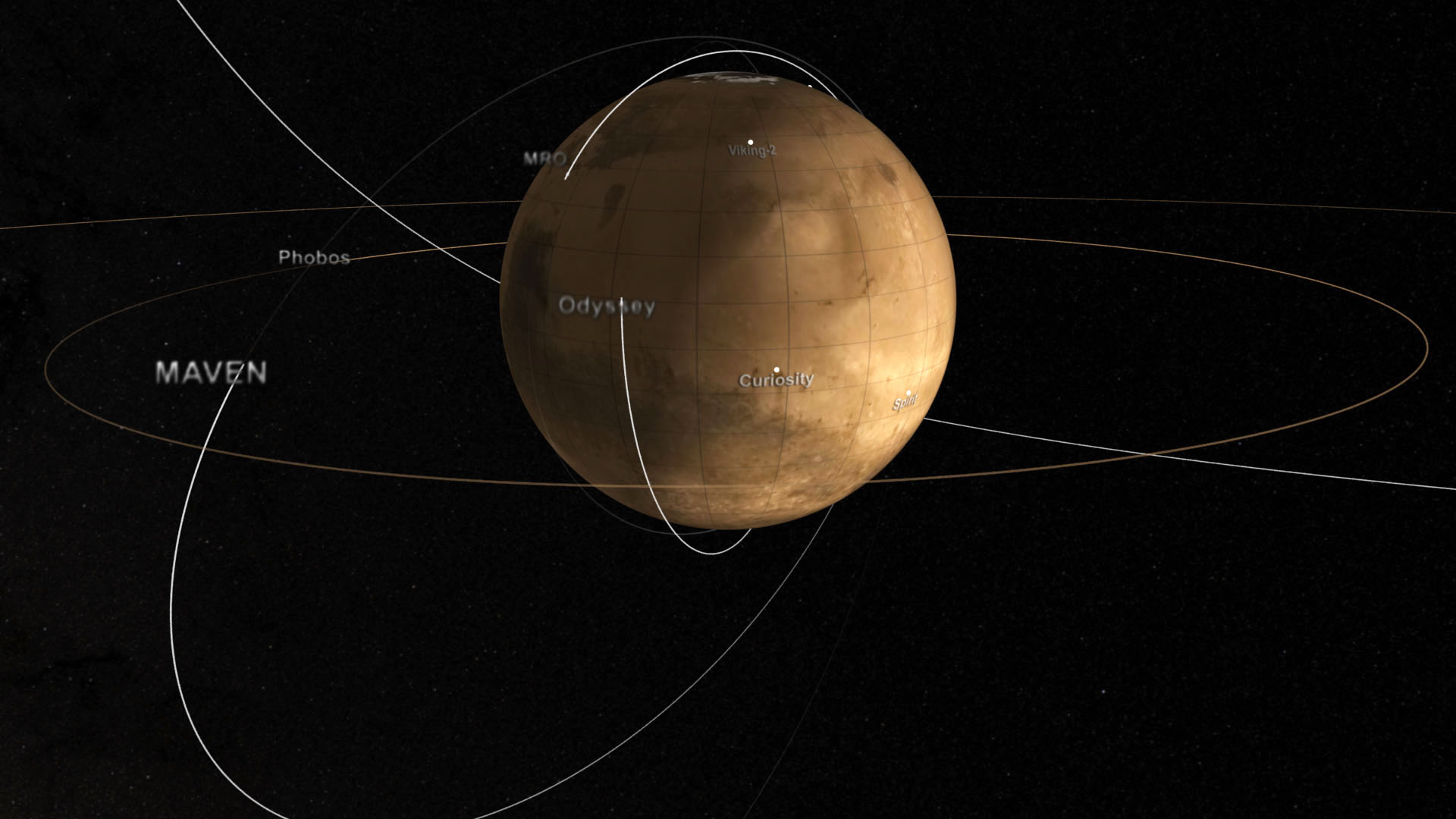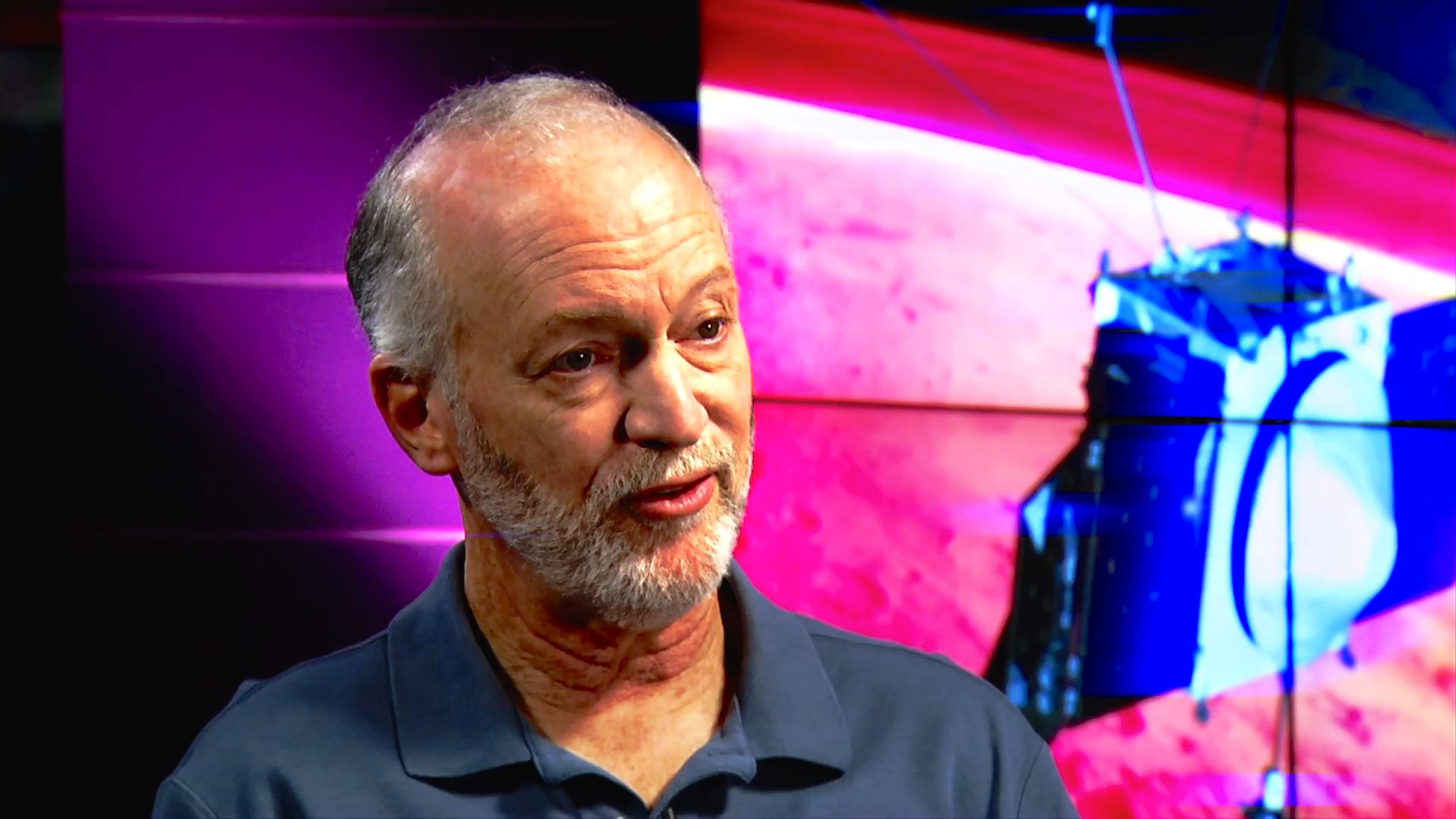MAVEN Stellar Occultation Atmospheric Coverage
Visualization depicting NASA's MAVEN satellite in an elliptical orbit around Mars. The horizon is scanned to determine atmospheric makeup. Blue sections of the atmosphere represent regions that have been scanned, and total coverage is achieved after roughly six orbits.
This video is also available on our YouTube channel.
NASA’s Mars Atmosphere and Volatile Evolution mission, or MAVEN, is the first spacecraft specifically designed to study the Mars upper atmosphere. MAVEN’s goal is to understand how Mars lost its thick, early atmosphere to space, and how this in turn caused it to lose its once hospitable climate.
MAVEN’s orbit gives it the most comprehensive view of the Martian atmosphere to date. Circling the red planet every 4.5 hours on an elliptical path, MAVEN passes close to the north and south poles at an inclination of 75 degrees. This allows MAVEN to gather a north-south swath of data with each pass. At the same time, Mars itself rotates eastward beneath MAVEN, giving the orbiter longitudinal coverage. The combination of MAVEN’s orbit and Mars’ daily rotation provides a complete picture of the Martian atmosphere every day.
While previous Mars orbiters have peered down at the planet's surface, MAVEN is spending part of its time gazing at the stars, observing the Martian atmosphere through a series of stellar occultations. As Mars rolls beneath MAVEN, due to the spacecraft's own orbital motion, background stars rise and set behind the planet. Their light dims as it passes through the tenuous atmosphere, with specific gases absorbing specific wavelengths. MAVEN uses its Imaging Ultraviolet Spectrograph to break apart this light and see which wavelengths are absorbed, allowing it to determine atmospheric composition at varying altitudes.

Print resolution still image - MAVEN in orbit around Mars

Print resolution still image - MAVEN studying the atmosphere of Mars

Print resolution still image - MAVEN studying the atmosphere of Mars
For More Information
See NASA.gov
Credits
Please give credit for this item to:
NASA's Scientific Visualization Studio
-
Visualizers
- Kel Elkins (USRA)
- Greg Shirah (NASA/GSFC)
- Ernie Wright (USRA)
-
Producer
- Dan Gallagher (USRA)
-
Scientist
- Bruce Jakosky (LASP)
Release date
This page was originally published on Wednesday, September 2, 2015.
This page was last updated on Wednesday, May 3, 2023 at 1:49 PM EDT.




